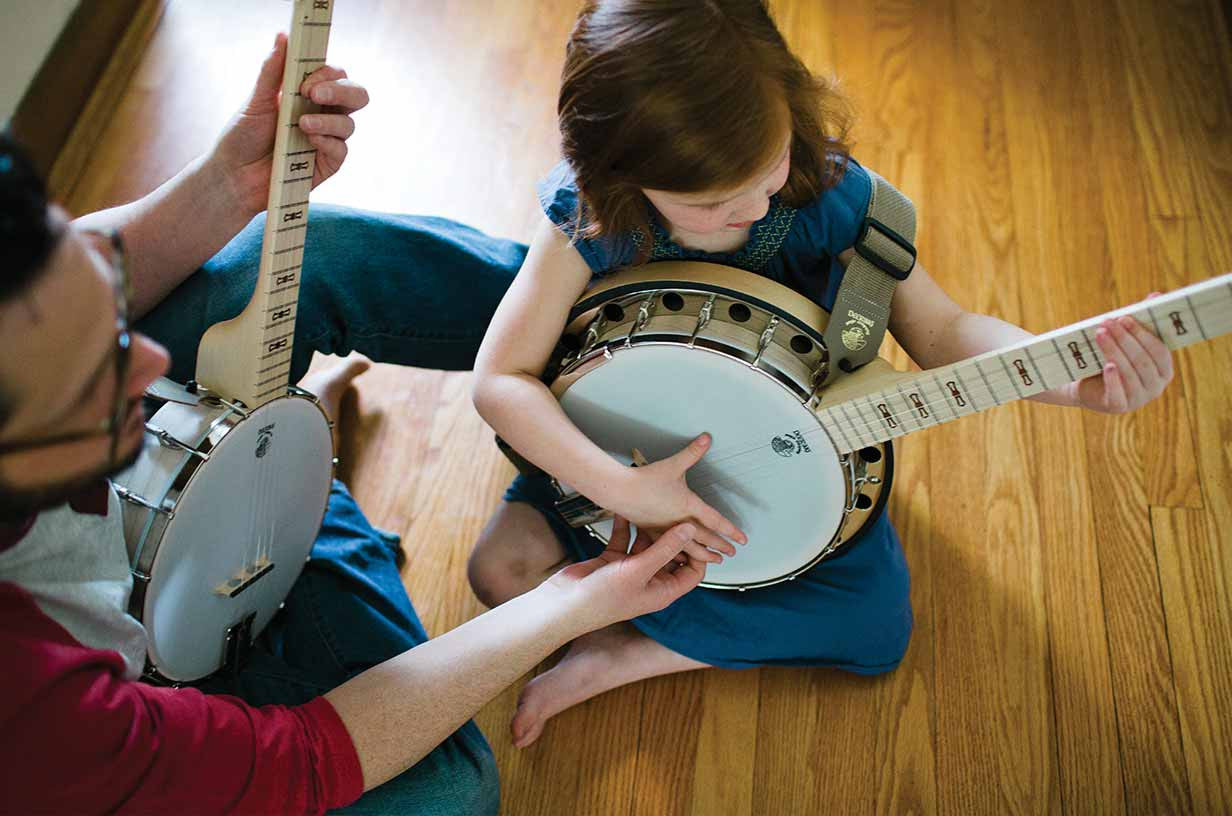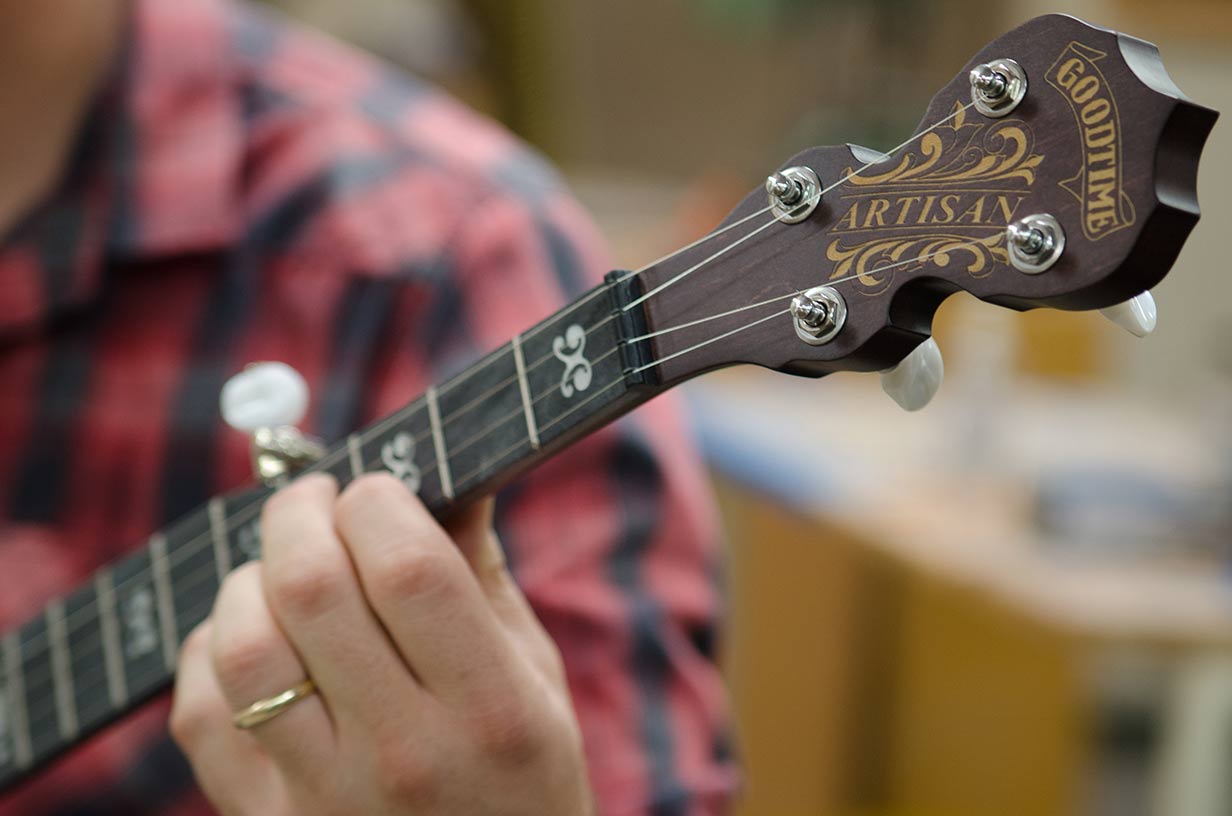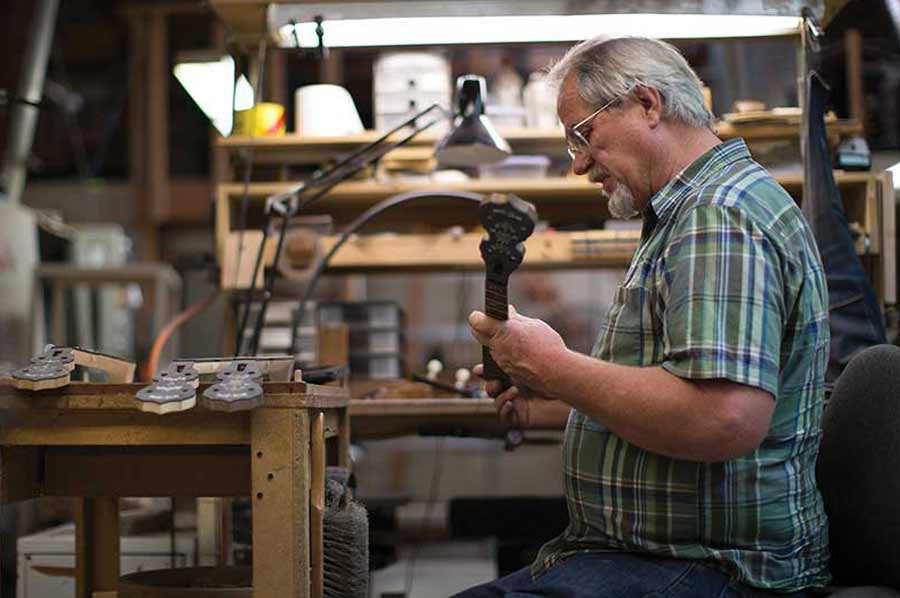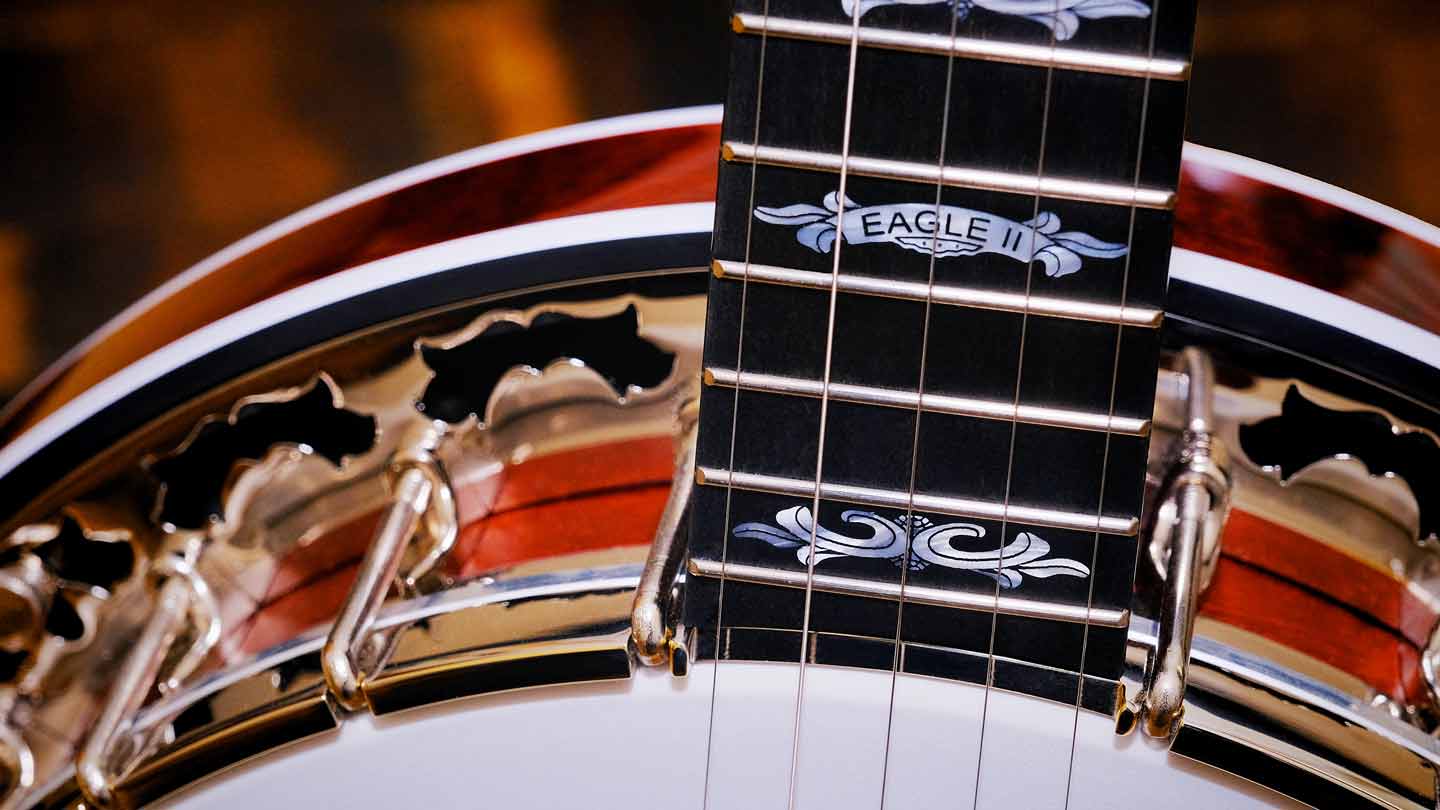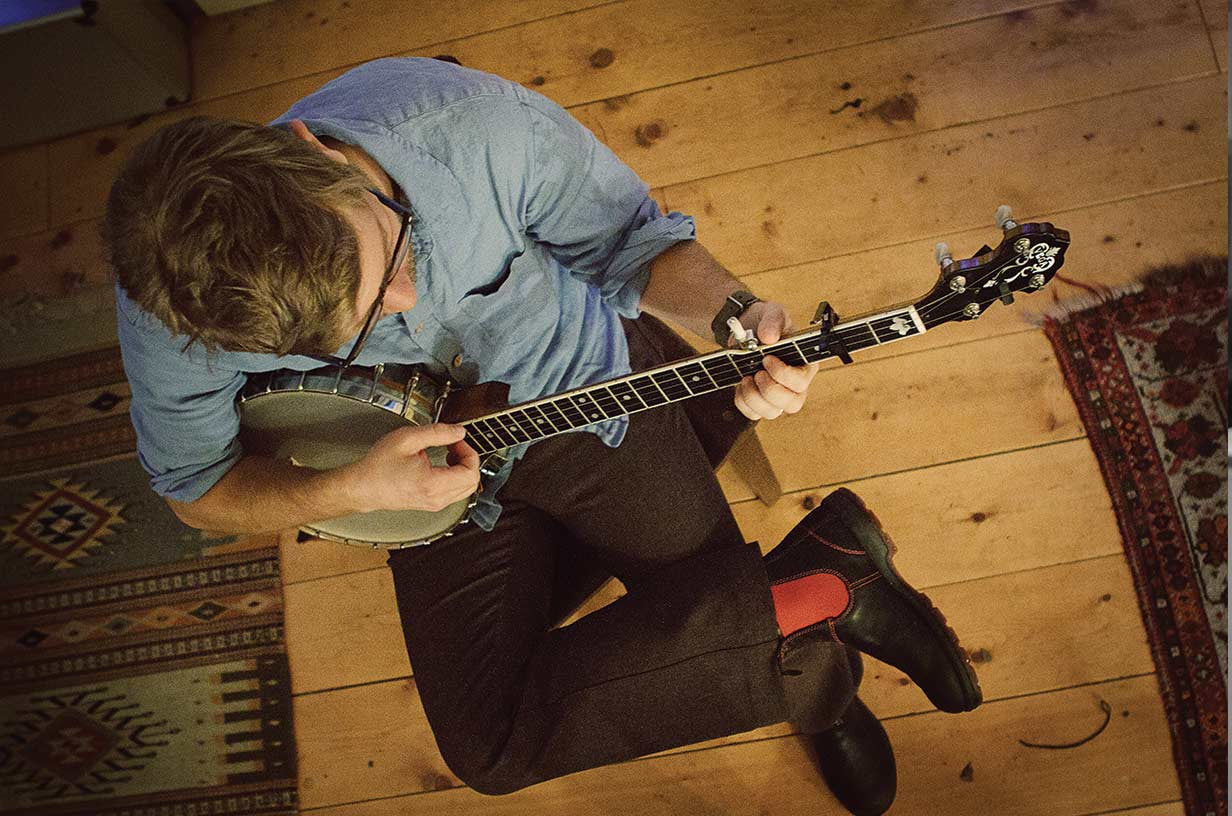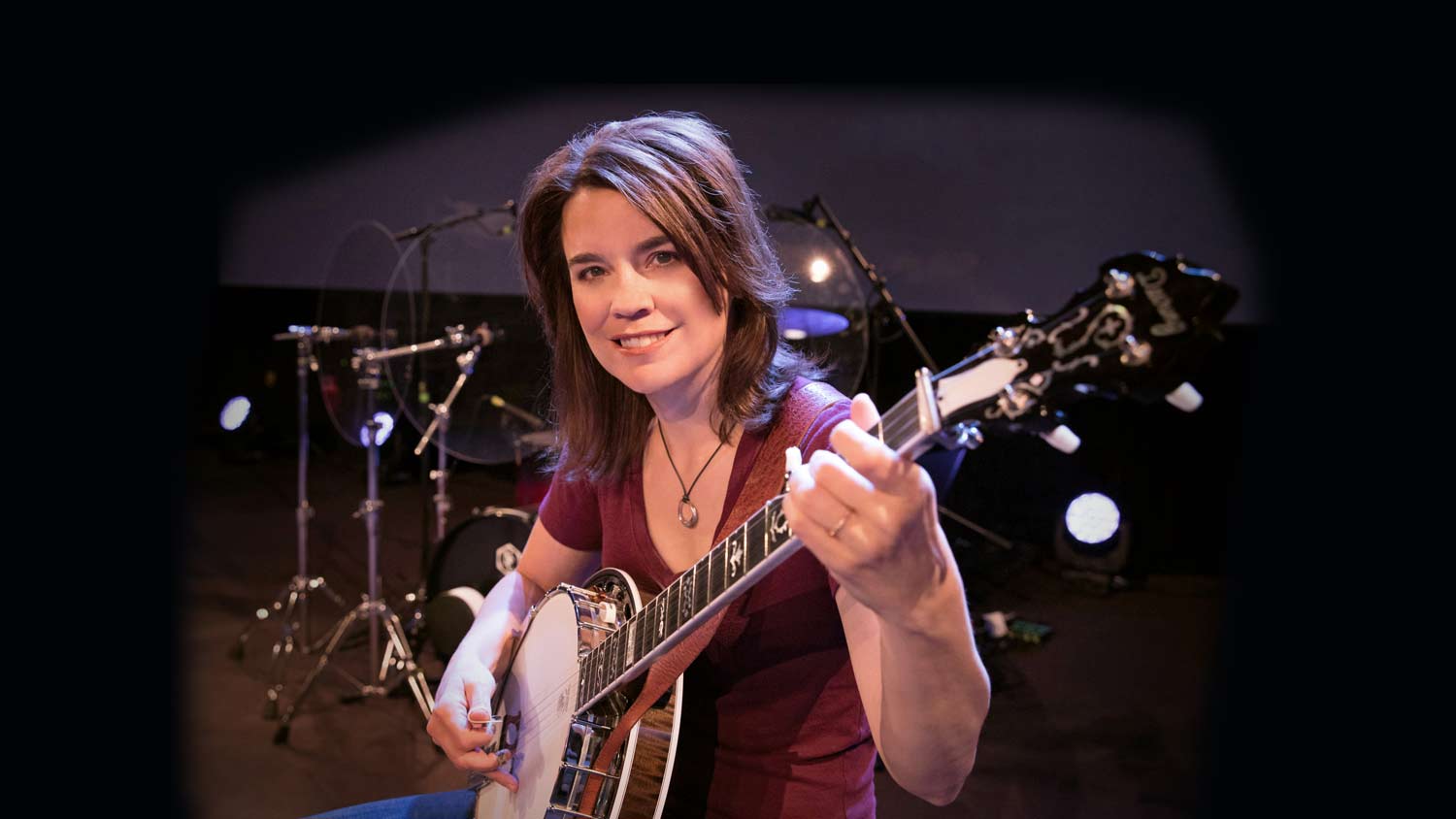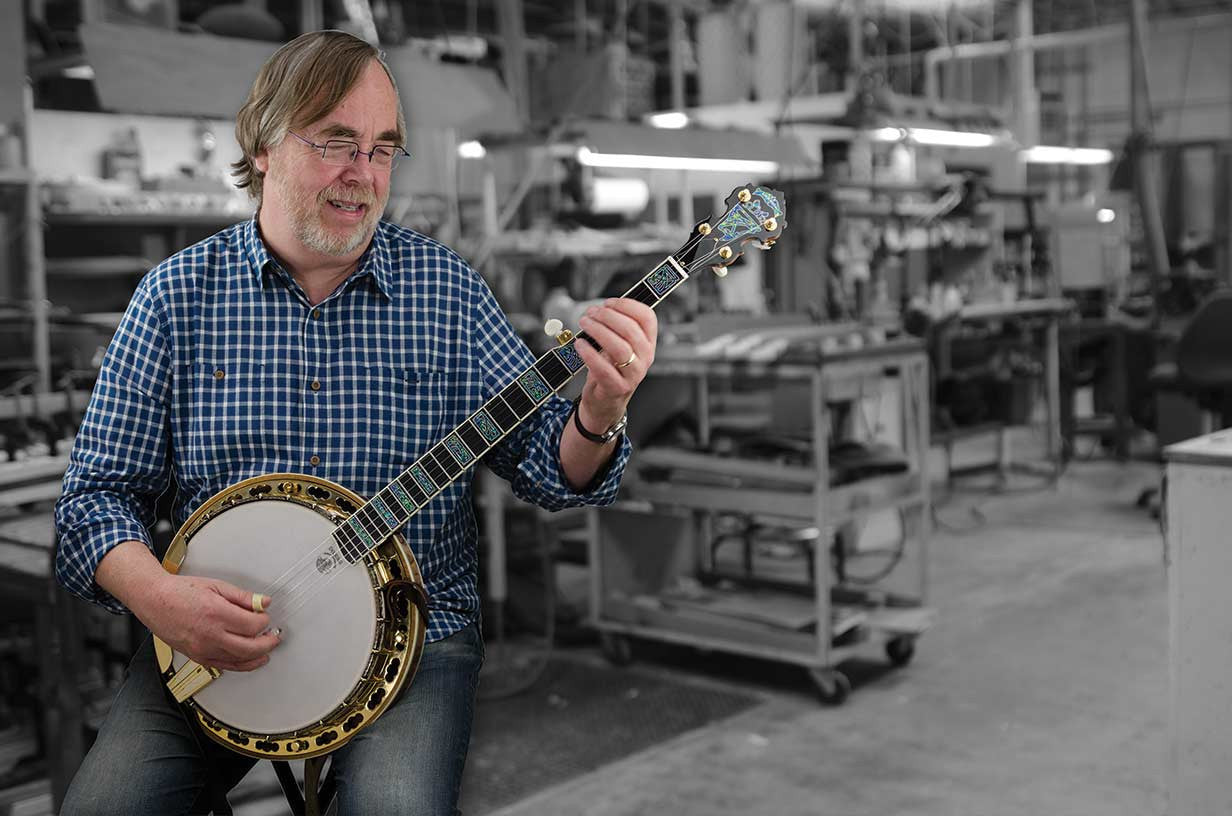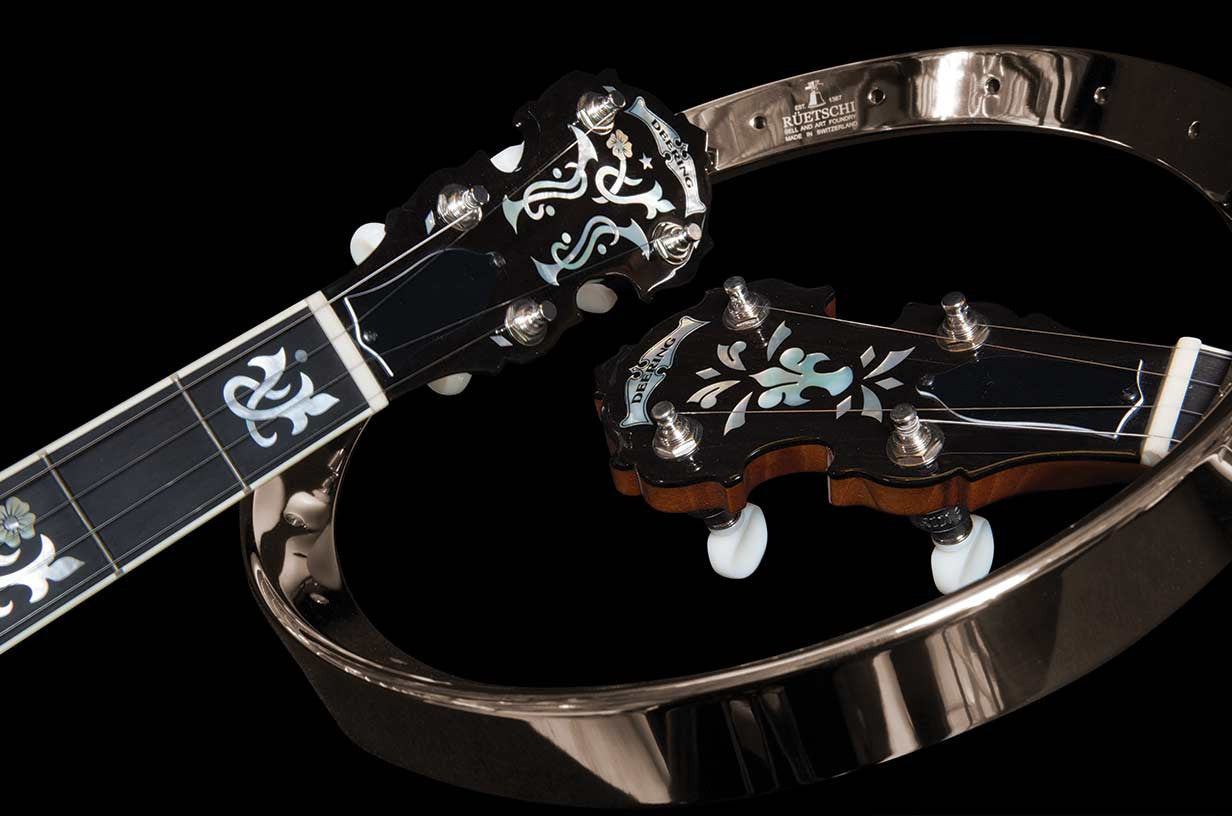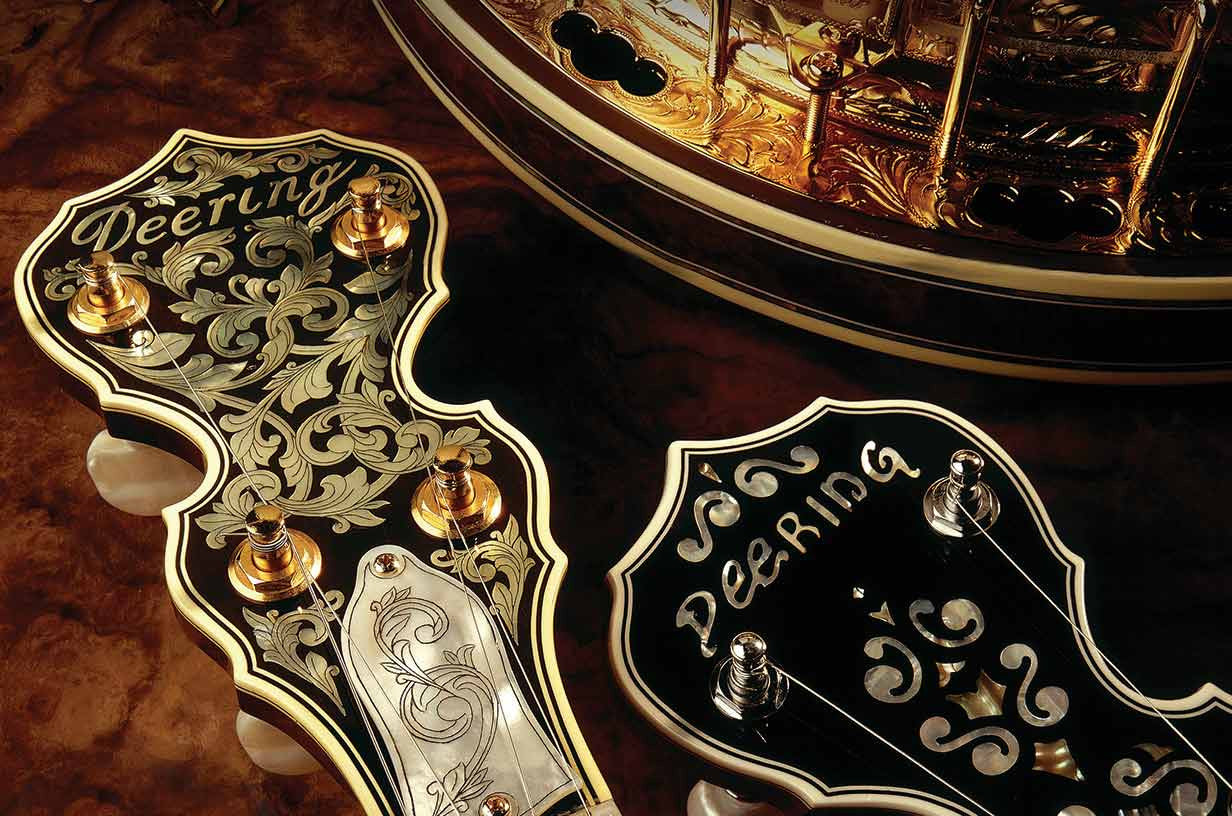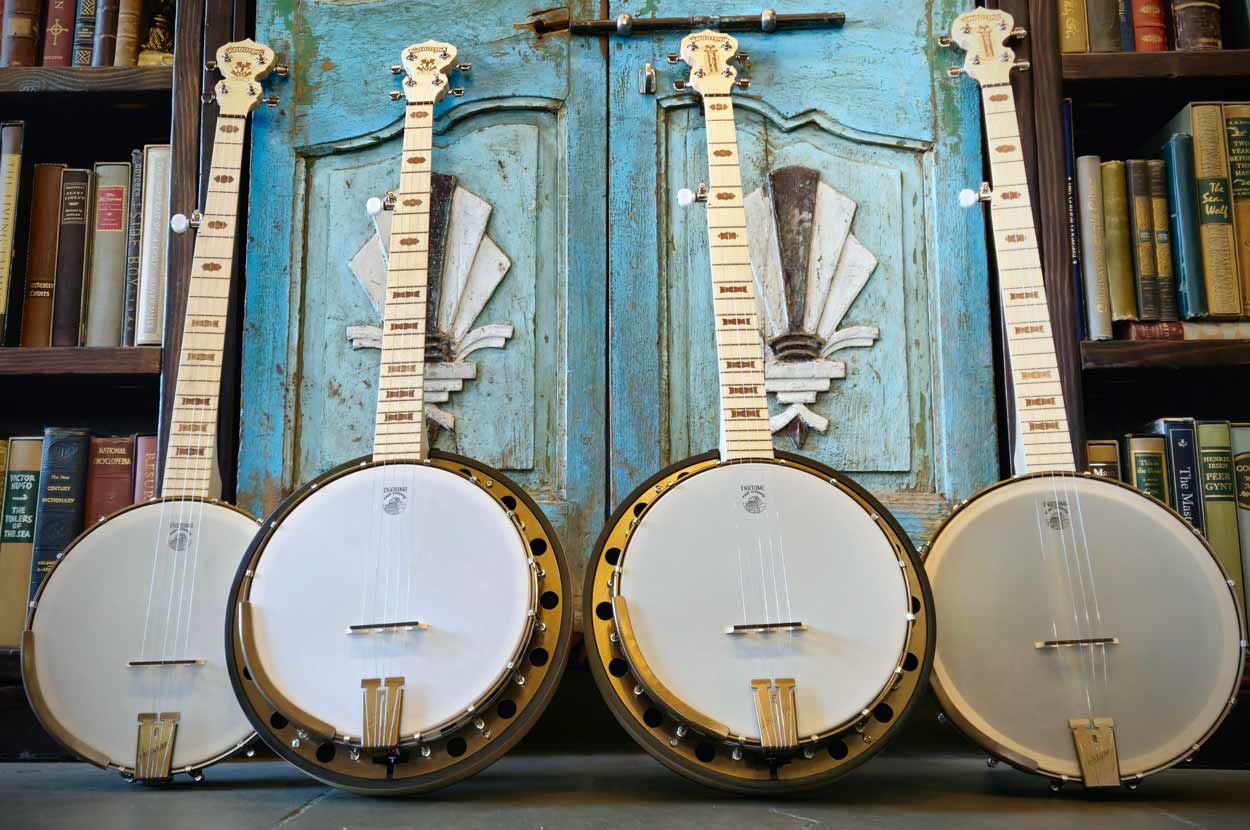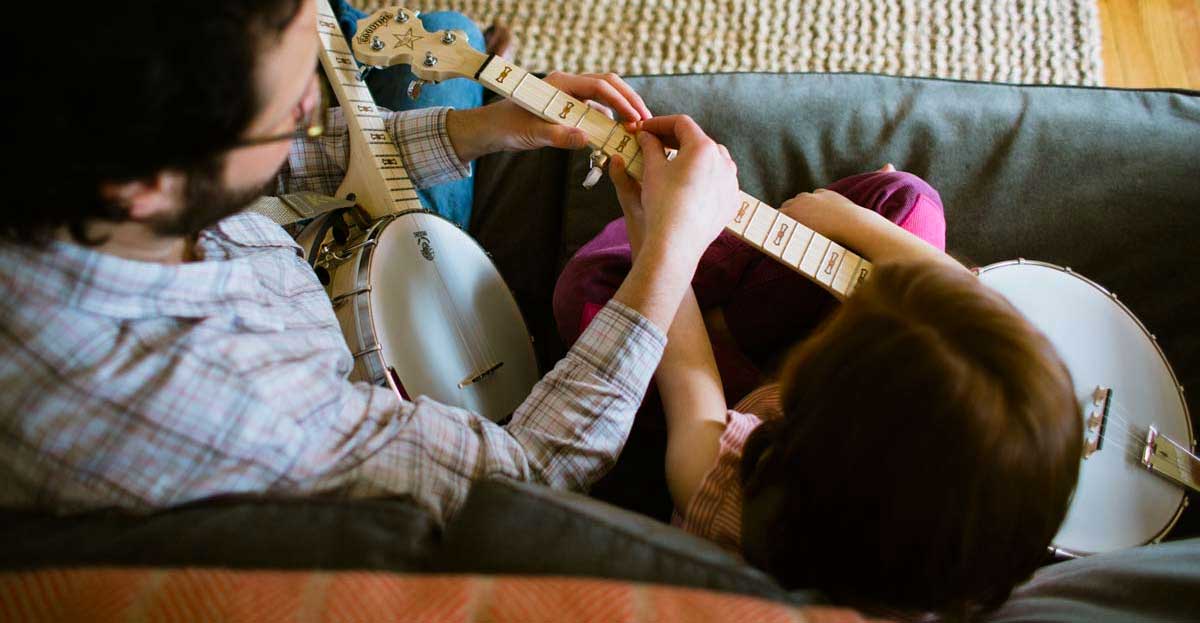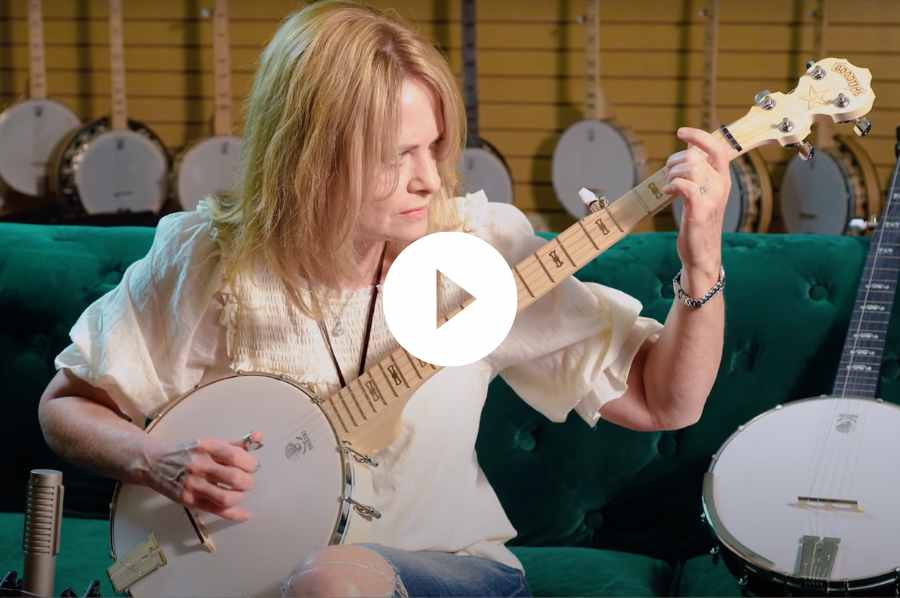Understanding Tenor Banjos
Tenor banjos are 4 string banjos that have a shorter neck and come in two varieties, the 17 fret and the 19 fret. The name “tenor” has nothing to do with a lower pitch such as a vocalist who is a tenor or a tenor saxophone. No one knows for sure where the name tenor came from, but many believe it was a mistake somewhere in history as these type of banjos were used during the American tango craze of the early 20th century and were often called tango banjos. Tango then erroneously became tenor somewhere down the line.
Tenor banjos are generally used for traditional jazz or Irish music. It is traditionally played with a flat pick. In traditional jazz the majority of the time you strum the banjo and in Irish music you are generally playing single note melodies.
Tenor banjos are traditionally tuned in the musical interval of fifths. This is the same as the string family in an orchestra - violins, violas, and cellos (except the bass).
There are two common ways to tune them - both using fifths.
Standard Tenor Tuning - C, G, D, A - same as viola and cello (cello is an octave lower). Get strings for standard tenor tuning here!
Irish Tenor Tuning - G, D, A, E - same as mandolin and violin! Get strings for Irish tenor tuning here!
A third way to tune the tenor banjo that is popular amongst guitar players is to tune it in what is called Chicago tuning. This tuning is the same as the first four strings of a guitar - D, G, B, E.
One of the great things about the tenor banjo when tuned in fifths is the wider chord voicings (the notes of the chord are spread out father in pitch) this creates. this allows each individual note of the chord to be heard and produces a clearer, fatter tone than when the notes of a chord are closer together. Another great thing the tuning of 5ths creates is symmetry across all strings when playing a scale, lick, or arpeggio. Find out more about the benefits of this symmetrical tuning here!
I play traditional jazz and I love the percussive nature of the instrument. When playing without a drummer, you really become the drummer of the band. After all, a banjo is just a drum with strings on it!
I also like to use the standard tenor tuning because the first string tuned to a high A note really allows the top note of your chord voicings to cut through and makes it great for chord solos.
